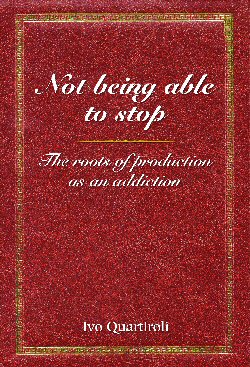Ada King, countess of Lovelace (1815–52), was a brilliant English mathematician. She is often called the first programmer in history. She wrote programs for Charles Babbage’s analytical engine, even foreseeing the scope of algorithms to process data beyond numerical calculations, which no one had yet begun to conceive. A programming language named Ada has been developed in her honor.
Ada Lovelace was the daughter of the romantic poet Lord Byron. He and his social entourage were disappointed with her gender and he soon separated from both her mother and England. Byron died when Ada was nine.
Ada’s mother arranged the girl’s life to avoid any contact with either her father or his attitude toward life. She considered Lord Byron insane and, worrying her daughter might share it, educated Ada in mathematics from a very early age, even through prolonged health problems constrained the girl to bedrest. Ada Lovelace died at 36 from uterine cancer and requested to burial next to Lord Byron, finally joining the father she never knew.
Alan Turing (1912–54), English mathematician and cryptoanalyst, had enormous influence on computer science. His Turing machine incorporated important advances in the formalization of algorithms and computability. Turing conceived the Turing Test which defined a “thinking machine” as one that fooled a person into believing s/he was having a conversation through a keyboard with a human being in a remote location. During the Second World War his cryptoanalysis was fundamental in breaking the German ciphers, contributing to the defeat of Nazism.
In his era, homosexuality in England was subject to criminal prosecution. In 1952, after admitting to having sex with a young man, Turing was given the choice between incarceration or a treatment with female hormones (“to reduce the libido”). How absurd that after helping save his country from Nazism, it treated him as a criminal. In 1954, Turing died of poisoning. In 2009, British Prime Minister Gordon Brown apologized on behalf of the British government for the way he was treated.
Jaron Lanier, in “One Half a Manifesto,” commented on the tragic death of Turing in these terms:
Turing died in an apparent suicide brought on by his having developed breasts as a result of enduring a hormonal regimen intended to reverse his homosexuality. It was during this tragic final period of his life that he argued passionately for machine sentience, and I have wondered whether he was engaging in a highly original new form of psychological escape and denial; running away from sexuality and mortality by becoming a computer.
I think the denial is deeper than the sexuality issue: It has to do with the denial of anything but the “pure” Cartesian mind, including the body and sensuousness. With both pillars of contemporary IT we see how a denial of sexual identity, the sensuous and non-rational world shaped their lives. Lovelace’s gender was rejected by her father, while her mother pushed her toward a purely rational life. The law repressed Alan Turing’s homosexuality, as he likely did himself.
The mind is regarded as the most important human feature and the identification with it is so deep that we want to reproduce it on machines, becoming creators in our turn. We even have developed a test to ascertain the “intelligence” of a machine.
Joseph Weizenbaum in 1964 created Eliza, an interactive program that simulated a Rogerian psychotherapist. Weizenbaum himself was surprised and concerned to see that users were taking its words seriously. While the mind can surely be simulated, this tell us nothing about what’s going on inside. However it does underscore how much the mind can be fooled and how we can actually behave mechanistically.
Ada King, contessa di Lovelace (1815-52), fu un’insigne matematica inglese. Viene spesso definita la prima programmatrice della storia. Scrisse programmi per la macchina analitica di Charles Babbage, arrivando persino a intuire l’importanza degli algoritmi nell’elaborazione dei dati oltre i semplici calcoli numerici, cosa che nessuno ancora aveva immaginato. Un linguaggio di programmazione è stato chiamato “Ada” in suo onore.
Ada Lovelace era figlia del poeta romantico Lord Byron. Byron e il suo entourage rimasero delusi dal fatto che Ada fosse nata femmina, per cui egli si separò velocemente sia dalla madre che dall’Inghilterra. Byron morì quando Ada aveva nove anni.
La madre di Ada fece in modo che la figlia evitasse qualsiasi contatto sia con il padre che con lo stile di vita di quest’ultimo. Lei considerava Lord Byron un pazzo e, temendo che la figlia potesse subirne l’influsso, la indirizzò verso gli studi di matematica sin dai suoi primi anni, anche quando persistenti problemi di salute costringevano Ada a letto.
Ada Lovelace morì a 36 anni per cancro all’utero e chiese di essere sepolta accanto a Lord Byron, riunendosi finalmente al padre che non aveva mai conosciuto.
Alan Turing (1912-54), matematico e crittanalista inglese, esercitò un’influenza enorme sull’informatica. La “macchina di Turing”, da egli inventata, rappresentava un progresso importante nella formalizzazione degli algoritmi e della computazione.
Inoltre, Turing inventò il “Test di Turing”, secondo il quale una “macchina pensante” era quella che sarebbe riuscita a far credere a una persona di stare avendo una conversazione, attraverso una tastiera, con un altro essere umano sito in una località remota. Durante la seconda guerra mondiale, la sua crittoanalisi fu indispensabile per decifrare il codice segreto tedesco, contribuendo alla sconfitta del nazismo.
Ai suoi tempi, in Inghilterra l’omosessualità era un reato. Nel 1952, dopo aver confessato di aver avuto rapporti sessuali con un ragazzo, Turing dovette scegliere se finire in carcere o subire un trattamento agli ormoni femminili (“per ridurre la libido”). Fu davvero assurdo che dopo aver aiutato il suo paese a sconfiggere il nazismo, egli venisse trattato come un delinquente.
Nel 1954, Turing morì per avvelenamento. Nel 2009, il Primo Ministro Gordon Brown, a nome del governo britannico, chiese ufficialmente scusa per il modo in cui Turing era stato trattato. Jaron Lanier, in “One Half a Manifesto”, ha commentato così la tragica fine di Turing:
Apparentemente, Turing si è suicidato perché aveva sviluppato un seno femminile, in seguito al regime ormonale cui era costretto per invertire la sua omosessualità. Fu in questo ultimo, tragico periodo della sua vita che egli si interessò particolarmente all’argomento della coscienza delle macchine, e mi chiedo se ciò non potesse essere una nuova, originalissima forma di fuga e negazione psicologiche: evitare la sessualità e la mortalità trasformandosi in un computer.
Io credo che la negazione non riguardi solo la sessualità. Ha a che fare con la negazione di tutto ciò che non sia la “pura” mente cartesiana, inclusi il corpo e la sensualità. In entrambi i pilastri dell’information technology contemporanea osserviamo che la negazione dell’identità sessuale e del mondo sensuale e non-razionale ha plasmato tutta la loro vita.
Il genere sessuale di Lovelace era stato rifiutato dal padre, mentre la madre la spinse verso una vita di pura razionalità. La legge represse l’omosessualità di Alan Turing, come probabilmente faceva lui stesso.
La mente è considerata la caratteristica umana più importante e l’identificazione con essa è tanto profonda che vogliamo riprodurla nelle macchine, trasformandoci a nostra volta in creatori. Abbiamo persino sviluppato un test per valutare “l’intelligenza” di una macchina.
Joseph Weizenbaum, nel 1964, ha creato Eliza, un programma interattivo che simulava uno psicoterapeuta rogersiano. Weizenbaum per primo fu sorpreso e preoccupato dall’importanza che veniva attribuita alle parole di Eliza.
È senz’altro possibile simulare la mente, ma questo non ci dice nulla su ciò che sta accadendo interiormente. A ogni modo, ciò ci fa capire una volta di più quanto la mente possa lasciarsi ingannare e quanto noi possiamo comportarci meccanicamente.








